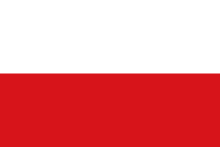National colours of the Czech Republic
This article does not cite any sources. (February 2018) |

The national colours of the Czech Republic (Czech: Státní barvy České republiky) are one of the national symbols of the Czech Republic, which officially represent the Czech Republic. The colours forming tricolour are in the following order: white, red and blue.[citation needed] The national colours come from the flag of the Czech Republic.
History[]


Traditional colours of Bohemia were white and red. These colours were derived from the coat of arms of Bohemia, but after Czechoslovakia became established, the blue colour was added to distinguish colours from the .
During Nazi Germany occupation of the Czech lands, these colours were used for the .
Although the colours weren't recognized official symbol in the Socialist Constitution from the 1960, the colours still remained in usage, especially during manifestations – such as the Prague Spring or the Velvet Revolution.
The colours are recognized as one of the official symbols of the independent Czech Republic from 1993.
Usage[]
The national colours are used for indication of the state property and for decoration during state ceremonials. Furthermore, they are used in the medal ribbons, and coffin wreath ribbons. During public holidays some people wear national colours ribbons on commemorative purposes.
Gallery[]

Flag of the Czech Republic and Czechoslovakia

Coat of arms of Bohemia

Polish flag
See also[]
- National colours
- National symbols of the Czech Republic


